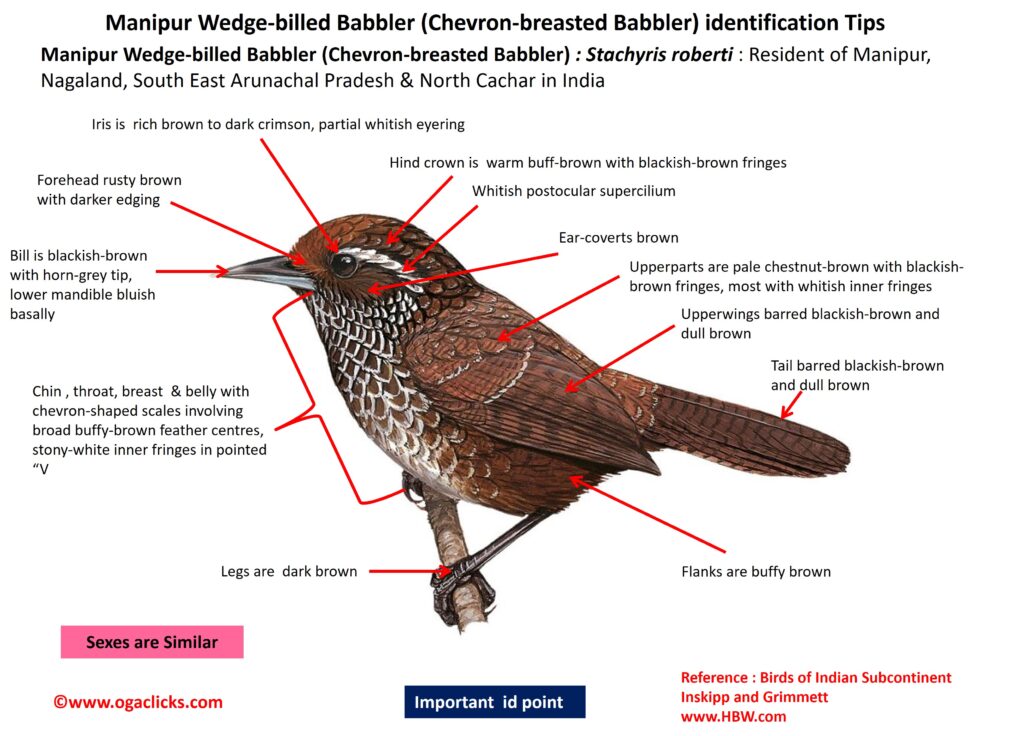
Manipur Wedge-billed Babbler/ Chevron-breasted Babbler Stachyris roberti
Etymology
- Stachyris : Greek word stakhus –ear of wheat; rhis -nostrils;opsis- Appearance { reference to the shape of the opercula or scales almost closing the nostrils}
- Roberti: Named after British surveyor Robert (fl. 1895)
Distribution in India: Resident of South East Arunachal Pradesh, North Cachar, Nagaland and Manipur.
Description: Size of 18 cm; 29–43 g. It has a pointed and conical bill. The lores to mid-crown are rusty brown with darker edging, shading on hindcrown to uppertail-coverts to warm buff-brown with blackish-brown fringes, most with whitish inner fringes making for slightly chevron-shaped scaled effect, weaker and rustier on rear upperparts. The upperwing and tail is barred blackish-brown and dull brown. The head side is mainly whitish-grey with dark brown scaling, partial whitish eyering strongest above eye, where extends back as whitish postocular supercilium. The ear-coverts are plain brown with pale shaft streaks. It has an elaborate pattern from chin to breast and flank sides of triangular (chevron-shaped) scales involving broad buffy-brown feather centres, stony-white inner fringes in pointed “V”, and dark outer fringes (barb extensions) with lower underparts losing the pattern as buffy brown predominates. The iris is rich brown to dark crimson. The bill is blackish brown with horn-grey tip, lower mandible is bluish basally. The legs are powerful, dark brown. Both the sexes are similar. The juvenile has rustier forecrown, little or no barring on wings and rustier posterior upperparts and underparts.
Habitat: It is found in evergreen forest with large trees and bamboo on edge of dense jungle. It is found from 300 m–2010 m.
Food habits: It eats Woodlice, small boring beetles, and other insects. It is found in parties of 10–15 individuals. It is arboreal at times, active climber about rough bark of bigger trees, though not higher branches. It often hunts in quite dense undergrowth near streams.
Breeding habits: They breed in May–Jun. The nest is a pad of moss on top of mass of fine grasses and a few tendrils and bents, no lining other than soft moss, wedged behind long hanging slip of bark built at bottom of long crevice above ground on tree. They lay a clutch of 4 eggs.